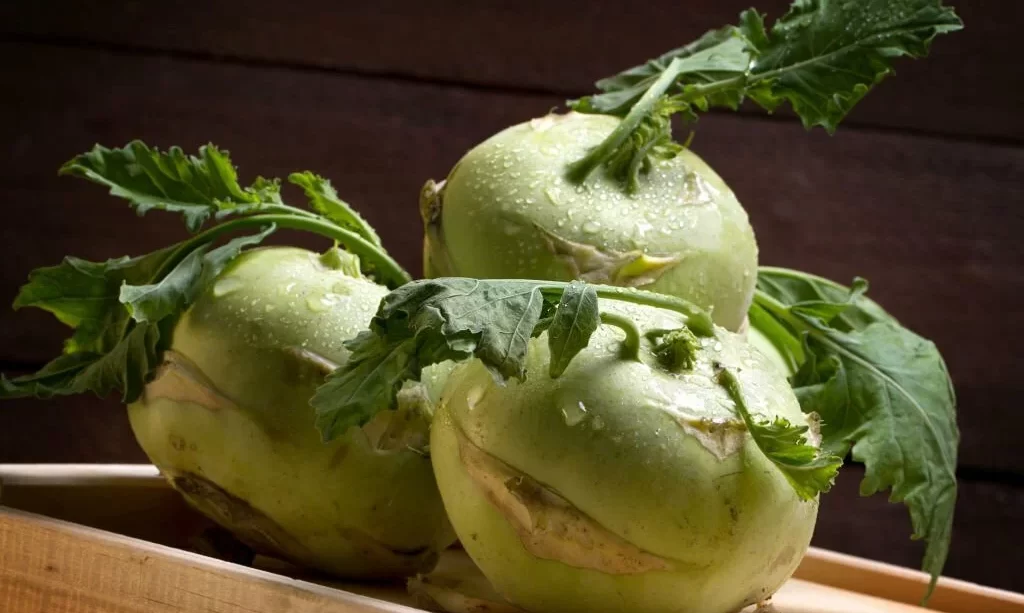Kohlrabi, with its unique appearance and versatile flavor, has become a staple in many kitchens. As enthusiasts of this cruciferous vegetable seek to extend its shelf life, the question arises: Can you freeze kohlrabi? In this article, we explore the possibilities of preserving the freshness of kohlrabi through freezing. Understanding the right techniques ensures that this nutritious vegetable remains a convenient and accessible ingredient in your culinary repertoire.
Freshness and Storage Considerations
Preserving the freshness of kohlrabi begins with optimal storage practices. To maintain its crisp texture and distinct taste, store fresh kohlrabi in the refrigerator. Remove the leaves, as they can draw moisture from the bulb. Place the bulbs in a perforated plastic bag in the crisper drawer, keeping them separate from fruits that emit ethylene gas, which may affect the quality of kohlrabi. However, even with proper storage, there are limits to the vegetable’s shelf life. Freezing becomes a viable option when you wish to extend the usability of kohlrabi beyond its fresh state.
Freezing Kohlrabi: Step-by-Step Guide
Freezing kohlrabi ensures that you can enjoy its flavors and nutritional benefits long after the harvest season. Follow these steps for successful freezing:
Preparation: Cleaning and peeling kohlrabi
- Wash the kohlrabi thoroughly to remove any dirt.
- Peel the tough outer layer to reveal the crisp, tender flesh.
Blanching process to preserve texture and color
- Bring a pot of water to a boil.
- Submerge the peeled kohlrabi in boiling water for 2-3 minutes.
- Quickly transfer them to an ice water bath to halt the cooking process.
Proper packaging techniques for freezing
- Pat the blanched kohlrabi dry to remove excess moisture.
- Portion them into airtight freezer bags or containers, removing as much air as possible to prevent freezer burn.
- Label with the freezing date for easy tracking.
Using Frozen Kohlrabi
Once frozen, kohlrabi maintains its nutritional value and can be a versatile ingredient in various dishes.
Highlight the potential culinary uses of frozen kohlrabi
- Soups and stews: Add frozen kohlrabi directly to simmering soups or stews.
- Roasting: Toss frozen kohlrabi with olive oil and seasonings before roasting for a convenient side dish.
- Stir-fries: Incorporate frozen kohlrabi into quick and flavorful stir-fries.
Discuss how frozen kohlrabi compares to fresh in various recipes
- Texture: While freezing alters the texture slightly, blanching helps preserve much of the original crunch.
- Flavor: The natural sweetness and earthy taste of kohlrabi remain intact, making it a valuable addition to many recipes.
Experimenting with frozen kohlrabi opens up opportunities for year-round culinary creativity, providing a convenient option for incorporating this nutritious vegetable into your meals.
Tips for Thawing and Cooking Frozen Kohlrabi
To make the most of your frozen kohlrabi, consider the following tips for thawing and cooking:
Provide guidelines for safely thawing frozen kohlrabi
- Thaw in the refrigerator overnight for a gradual thawing process.
- If time is limited, use the defrost function on the microwave for quicker results.
Offer cooking tips to maximize flavor and texture
- Use frozen kohlrabi directly in dishes like soups and stews for minimal texture change.
- For roasting or stir-frying, allow the kohlrabi to thaw partially for more even cooking.
By following these tips, you ensure that the thawing and cooking process enhances rather than compromises the quality of your frozen kohlrabi.
Conclusion
In conclusion, freezing kohlrabi provides a practical solution to prolong its shelf life while retaining much of its nutritional value and unique flavor. With careful preparation, including blanching and proper packaging, frozen kohlrabi becomes a versatile ingredient for a variety of dishes. From soups to roasts, its culinary applications are diverse and convenient. By incorporating these freezing techniques into your kitchen routine, you can savor the goodness of kohlrabi throughout the year, adding a nutritious touch to your meals.




